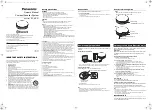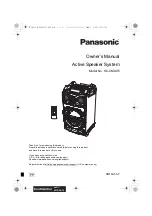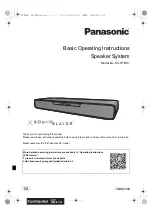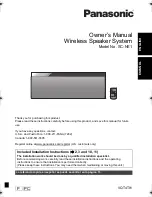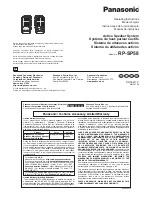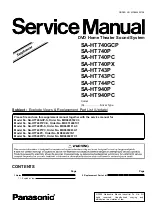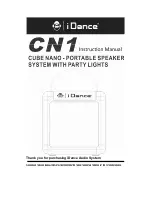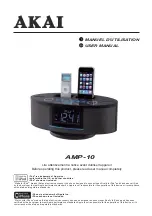
9
ENGLISH
The cabinet surfaces will usually only require dusting. If you wish
to use an aerosol or other cleaner, apply the cleaner onto the
BKNSGMNSCHQDBSKXNMSNSGDOQNCTBS@MCSDRS@RL@KK@QD@jQRS
as some cleaning products may damage some of the surfaces.
Avoid products that are abrasive, or contain acid, alkali or
antibacterial agents. Marks on the paint surface may be removed
with a dilute perfume-free soap solution. Remove any remaining
streak marks by spraying with a proprietary glass cleaner and
KHFGSKXVHOHMFCQXVHSG@LHBQNjAQDBKNSG#NMNSTRDBKD@MHMF
agents on the drive units and avoid touching them as damage
may result.
Real wood veneers are treated with an ultra-violet resistant
lacquer to minimise changes in colour over time. Nevertheless,
like all natural materials, a degree of colour change is to be
DWODBSDC"NKNTQCHEEDQDMBDRL@XADQDBSHjDCAXDWONRHMF
all the veneer surfaces equally and evenly to sunlight until the
colour is uniform. This process can take a long time, but may
be accelerated by careful use of an ultra-violet lamp. Keep the
speakers away from direct sources of heat such as radiators and
warm air vents in order to minimise the possibility of the wood
veneer cracking.
The performance of the speaker will change subtly during the
initial listening period. If the speaker has been stored in a cold
environment, the damping compounds and suspension materials
of the drive units will take some time to recover their correct
mechanical properties. The drive unit suspensions will also loosen
TOCTQHMFSGDjQRSGNTQRNETRD3GDSHLDS@JDMENQSGDROD@JDQSN
achieve its intended performance will vary depending on previous
storage conditions and how it is used. As a guide, allow up to
a week for the temperature effects to stabilise and 15 hours of
average use for the mechanical parts to attain their intended
design characteristics.
5. Running In
6. Aftercare
Summary of Contents for HTM71 S2
Page 1: ......








